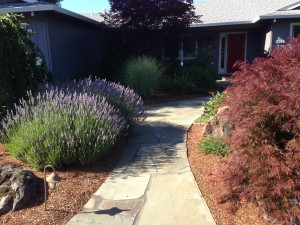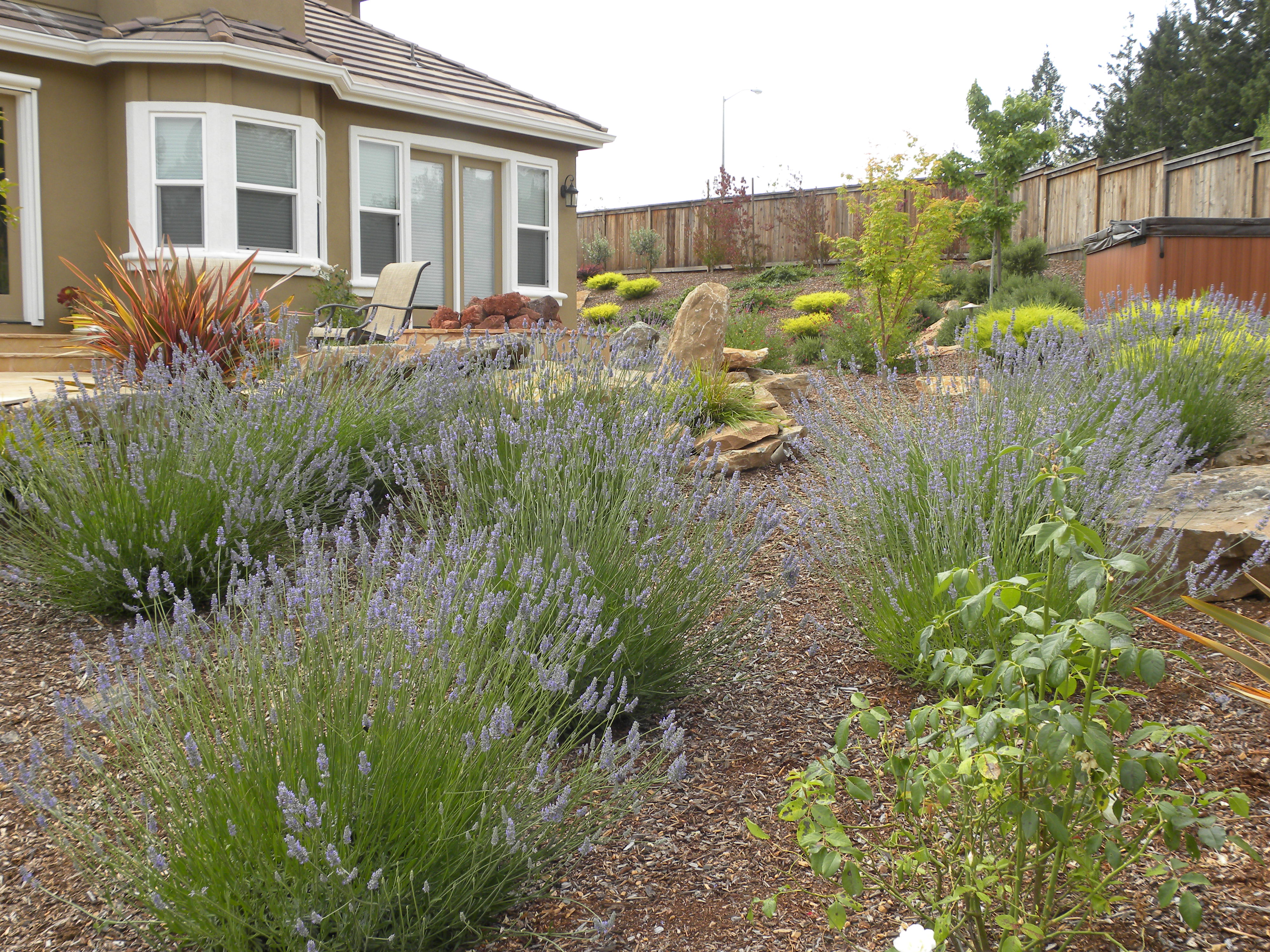Much of Northern California, and certainly the North Bay has experienced drought over the last several years. Even in non-drought years (such as the winter of 2016-2017), the rainy season is brief – maybe four to five months of occasional rain followed by a completely dry summer and early fall. Details Landscape Art has been designing and building landscapes in Sonoma, Napa and Marin Counties for 26 years, and is experienced in the particular nuances of our climate, and installing water conserving or drought tolerant gardens.
To begin with, we always emphasize to our clients that a drought tolerant garden does NOT need to be dry, arid, or look like a desert. It can look lush, interesting and colorful while minimizing the need for water. Some drought tolerant plants are natives, some are from other countries, and most are deer resistant.
Please note that water-conserving plants are not drought tolerant immediately. After planting and until the roots are established in the soil, they need regular watering of the root ball for the first growing season. After one full year, including one winter, the plant should be well established. Thereafter, a once monthly soaking during the dry months should be sufficient every year. Remember, low water use does not mean NO water use.
Details Landscape Art has developed, over the years, a list of tried and true low water use plants that are relatively pest and disease free, require minimal pruning, and are generally available at local wholesale nurseries. Most important, they align with our consistent aim to deliver beautiful gardens with year-round interest, mixing heights, textures and bloom seasons. The possibilities are exhaustive, but below is a sampling of our favorites. We list only the families and varieties we commonly use, although there are many varieties available.
Trees:
-Lagerstroemia indica (crape myrtle) – we recommend only using the Indian-named varieties, which are powdery mildew resistant
-Celtis (Hackberry)
-Olea (Olive) – only use low fruiting varieties if near public use areas
-Schinus molle (California Pepper) – give it plenty of room
-Pistacia chinensis (Chinese pistache) – gorgeous fall color
-Cercis canadensis (Eastern redbud)
-Cercis occidentalis (Western redbud) – we LOVE ‘Forest Pansy’
-Maytenus boaria (Mayten tree) – we especially like the ‘Green Showers’ variety
-Sequoia sempervirens (Redwood)
Shrubs and groundcovers:
-Arctostaphylos (Manzanita)
-Agapanthus
-Berberis thuinbergii (Japanese barberry)
-Buxus microphylla japonica (Japanese boxwood)
-Ceanothus (California Wild Lilac)
-Cistus (Rockrose)
-Correa (Australian fuschia)
-Cotinus coggygria (Smoke tree)
-Feijoa sellowiana (Pineapple guava)
-Lavandula (Lavender) – frequent deadheading required
-Lantana – somewhat frost tender, purple is the hardiest
-Leptospermum (New Zealand Tea tree)
-Myoporum parvifolium
-Nandina domestica (Heavenly bamboo)
-Nerium oleander
-Pittosporum
-Podocarpus macrophylla (Yew Pine)
-Rosmarinus officinalis (Rosemary)
-Sarcococca ruscifolia – deep shade tolerant
-Viburnum
-Westringia rosmariniformis
Vines:
-Clytostoma callistegoides (Lavender trumpet vine)
-Distictus buccinatoria (Blood red trumpet vine)
-Gelsenium sempervirens (Carolina jessamin)
-Jasminum polyanthum (Pink jasmine)
-Passiflora caerulea (Passion vine)
-Rosa banksiae – Lady Banks rose)
It is highly recommended that a drip irrigation system be installed. It is the most efficient method of plant irrigation, applying water only to the root ball of the plant. Along with an irrigation controller, the timing, placement and amount of water application can be easily controlled for the occasional watering of drought tolerant gardens.

